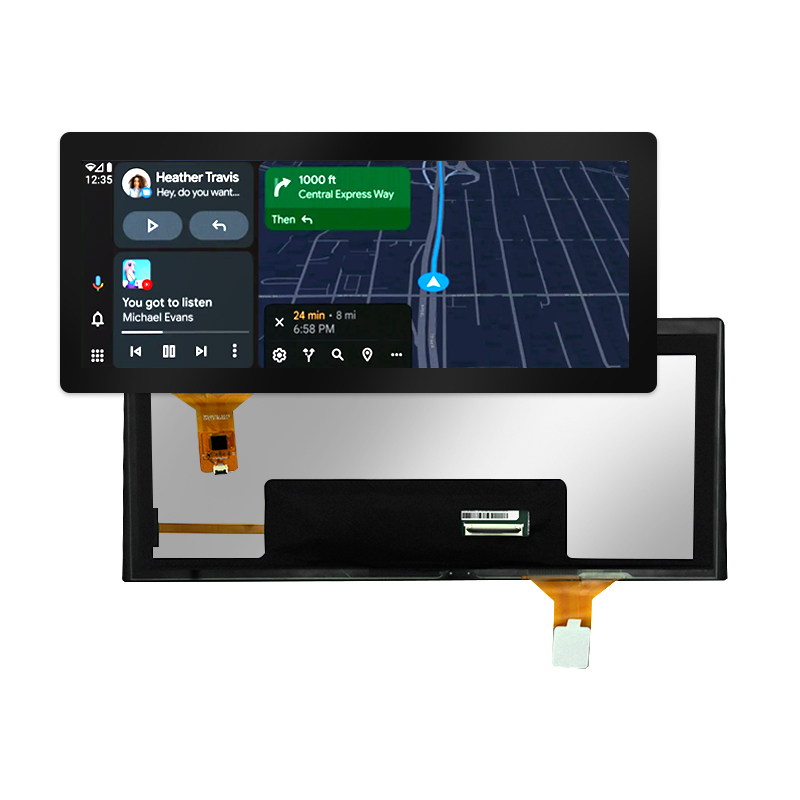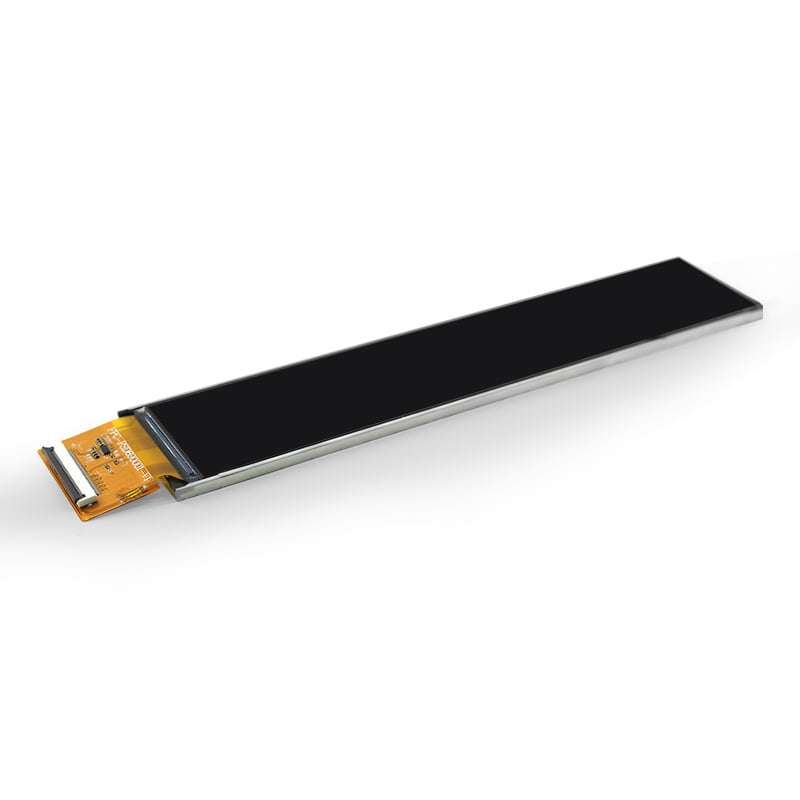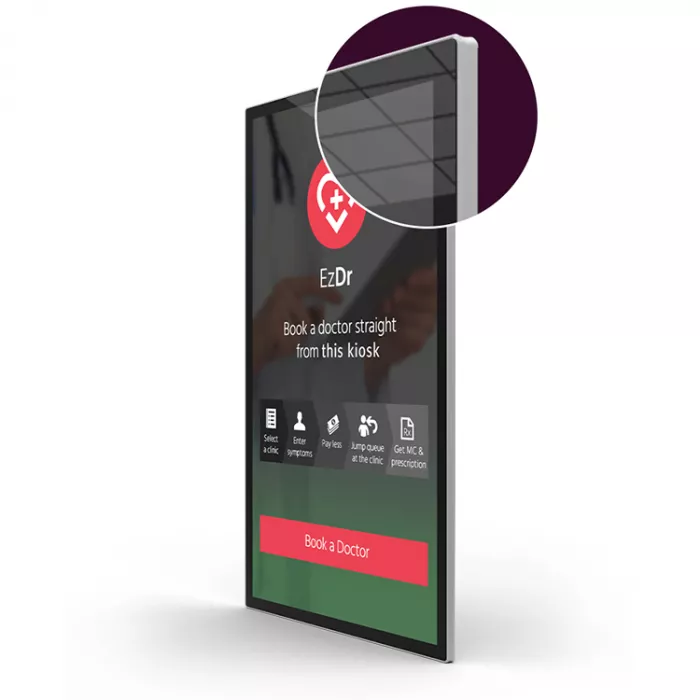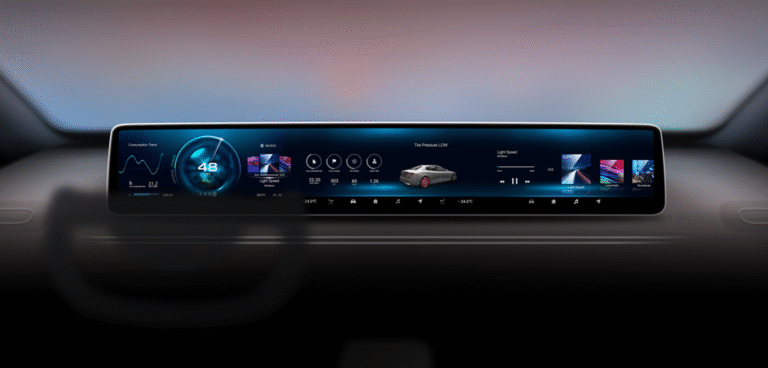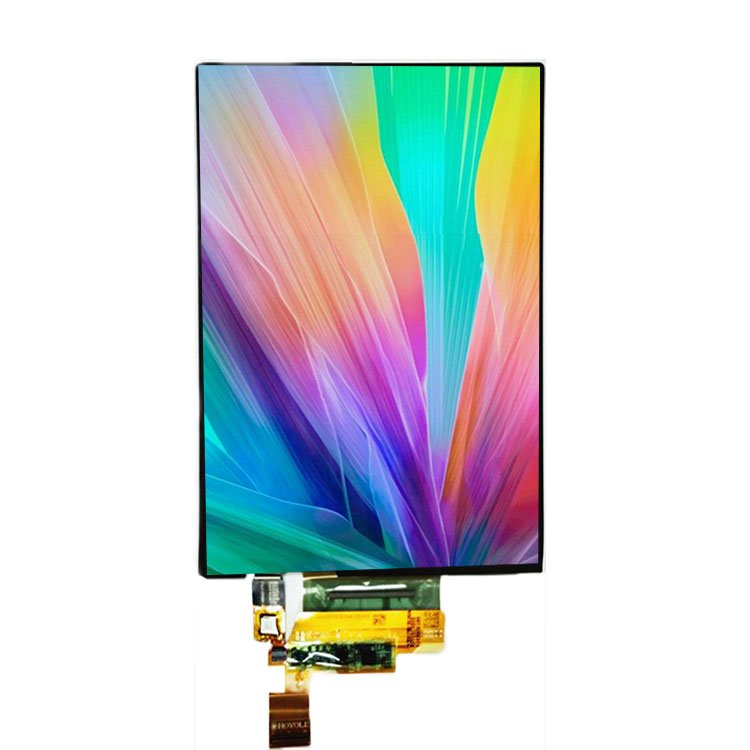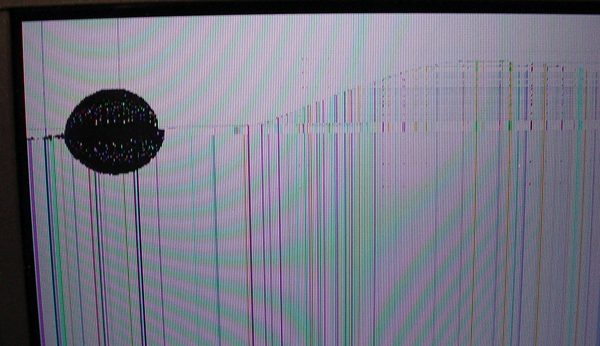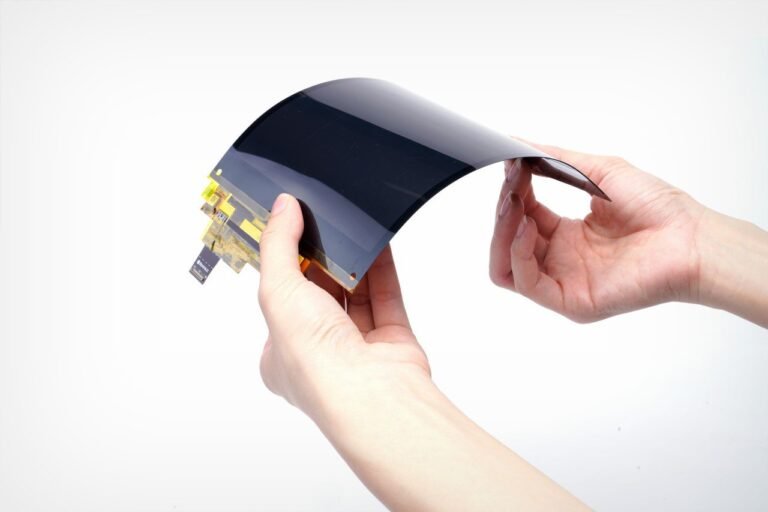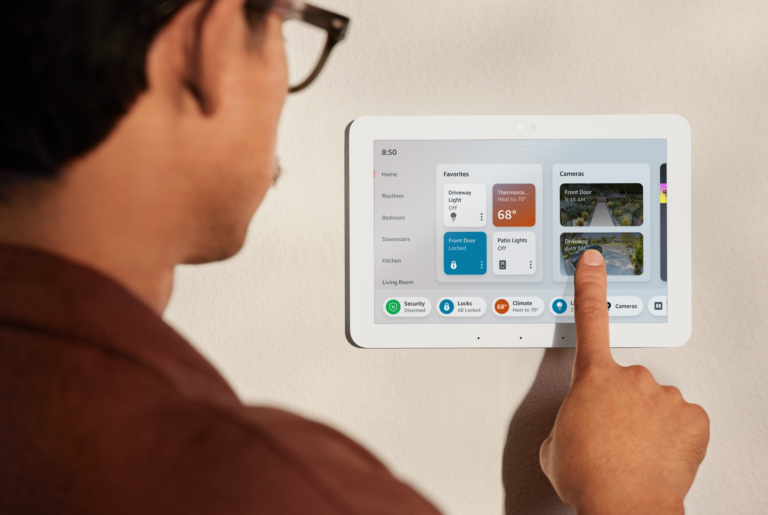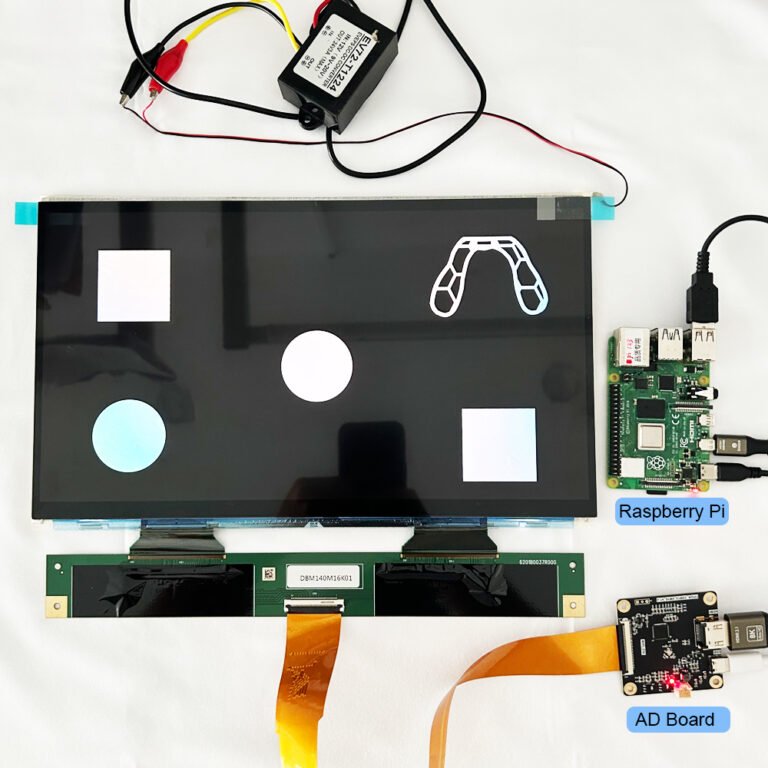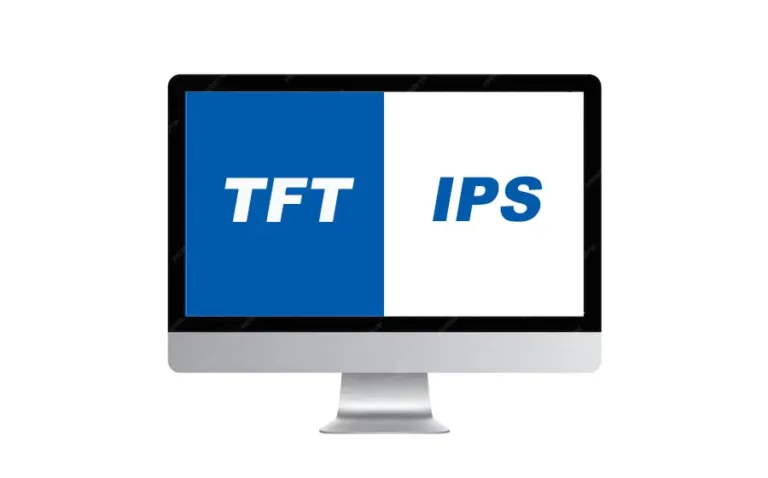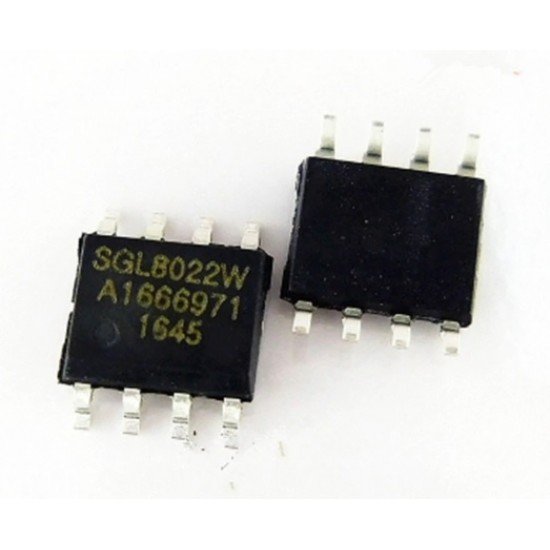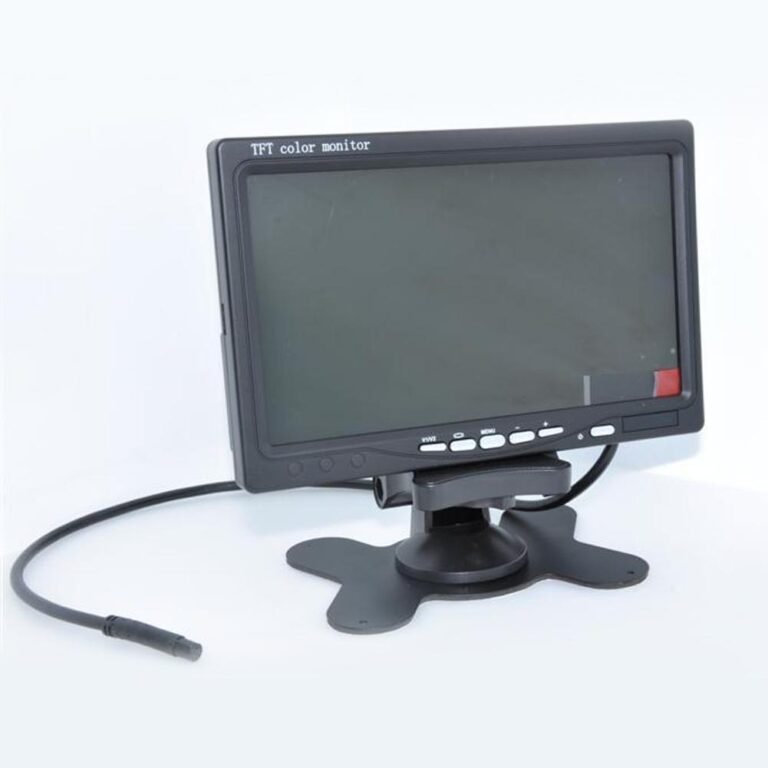Screen Layering: Traditional vs Integrated Approaches
A typical touchscreen stack includes three layers:
- Cover glass (lens)
- Separate touch sensor layer
- LCD display panel
Traditional methods use two bond lines and an air gap between layers, increasing thickness and introducing glare. In contrast, In‑Cell, On‑Cell, and OGS integrate the touch layer into existing components, improving optical performance and reducing weight.
In‑Cell Technology: Touch Embedded Inside the LCD
Definition: Touch sensing electrodes are built directly into the LCD panel—typically at the VCOM or color filter layer.
Características principales:
- Ultra-thin design with no separate touch layer
- Superior optical clarity with reduced internal reflections
- High integration cost and manufacturing complexity
- Lower yield due to combined touch/display failures
Used in premium devices, In‑Cell technology is ideal where sleek design and visual clarity are prioritized.
On‑Cell Technology: Touch Placed On the Color Filter Layer
Definition: Touch sensors are patterned between the LCD’s color filter and polarizer layers.
Key Attributes:
- Thicker than In‑Cell, but easier to manufacture
- Better impact resistance compared to In‑Cell
- Moderate cost and complexity
- Can cause color non-uniformity under pressure
On‑Cell is common in AMOLED and mid-to-high-end LCDs, balancing performance and feasibility.
OGS (One Glass Solution / Touch On Lens)
Definition: Touch electrodes are deposited directly onto the inner surface of the cover glass, eliminating a separate touch panel.
Benefits:
- Removes one glass and bonding layer, reducing weight and cost
- Offers excellent transparency and touch response
- Lower manufacturing difficulty and better yield
Desafíos:
- Requires precise glass processing
- Slightly thicker than In‑Cell, but stronger overall
OGS is widely adopted in smartphones and tablets due to its scalability and visual performance.
Comparative Summary
| Característica | In‑Cell | On‑Cell | OGS (Touch-On-Lens) |
|---|---|---|---|
| Thickness | Thinnest | Thin | Moderado |
| Optical Clarity | Excellent | Good | Excellent |
| Touch Sensitivity | Alta | Moderate–High | Very High |
| Manufacturing Difficulty | Very High | Alta | Bajo |
| Eficiencia de costes | Lowest | Moderado | Alta |
| Durabilidad | Moderado | Alta | Moderado |
| Repairability | Bajo | Bajo | Medium (glass only) |
Real-World Adoption Examples
- In‑Cell: Used in early Apple iPhones, Nokia Lumia series
- On‑Cell: Adopted in AMOLED smartphones and Microsoft Surface tablets
- OGS: Popular across Xiaomi, Huawei, and other mid-to-high-end mobile devices
Use Cases and Design Recommendations
Wearables & Smartphones:
- Choose In‑Cell or OGS for slim form factors and superior visual performance
Industrial Embedded Systems:
- OGS is ideal for rugged, durable touch interfaces
- On‑Cell is suitable for moderate thickness with good integration
Outdoor Displays & Rugged Devices:
- OGS with hardened glass is most impact-resistant
- Evite la tecnología In-Cell si el riesgo de fallo de visualización es crítico
Consideraciones Técnicas
- Interferencia por Ruido Táctil: Las tecnologías In-Cell y On-Cell requieren un diseño eléctrico cuidadoso para evitar la distorsión de la señal
- Rendimiento de Fabricación (Yield): La tecnología In-Cell tiene tasas de scrap más altas debido a su integración estrecha
- Fragilidad del Borde del Cristal: La tecnología OGS requiere un corte de precisión para evitar grietas
- Variación del Ángulo de Visión: La tecnología On-Cell puede exhibir más reflejos bajo estrés angular
Preguntas frecuentes
P1: ¿Qué tecnología ofrece el mejor rendimiento óptico?
Tanto In-Cell como OGS proporcionan una transparencia excelente debido a menos reflexiones internas.
P2: ¿Cuál es la más económica para producción en masa?
OGS generalmente ofrece la mejor relación costo-rendimiento.
P3: ¿Pueden usarse con guantes?
Sí, especialmente OGS y On-Cell. La tecnología In-Cell puede requerir ajustes.
P4: ¿Puedo reemplazar solo la capa táctil si se rompe?
Solo con OGS es viable una reparación parcial. In-Cell y On-Cell están totalmente adheridas a la pantalla.
P5: ¿Cuál es la más adecuada para entornos ruggedizados (duros)?
OGS con cristal reforzado o lente de cubierta es la más tolerante a los impactos.
Conclusión
Elegir entre In-Cell, On-Cell y OGS depende de las necesidades específicas de su producto:
- Para diseños ultradelgados y premium , opte por In‑Cell
- Para integración equilibrada y durabilidad, use On‑Cell
- Para dispositivos rentables, escalables y ruggedizados (robustos) , elija OGS
Cada una ofrece una combinación única de claridad, costo, fabricabilidad y durabilidad. Comprender estas compensaciones garantiza una mejor experiencia de usuario y un desarrollo de producto más fluido.




